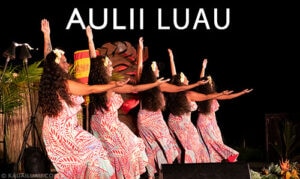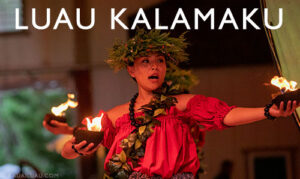Hawaiian Hula
Everything You Need To Know About Hawaiian Hula

Hawaiian Hula
Hula has been a defining aspect of Hawaiian culture for centuries. Yet most Hawaii visitors have little understanding of the dance’s significance and origins. Their knowledge is typically limited to hula seen at luaus, which are generally more entertaining than educational.
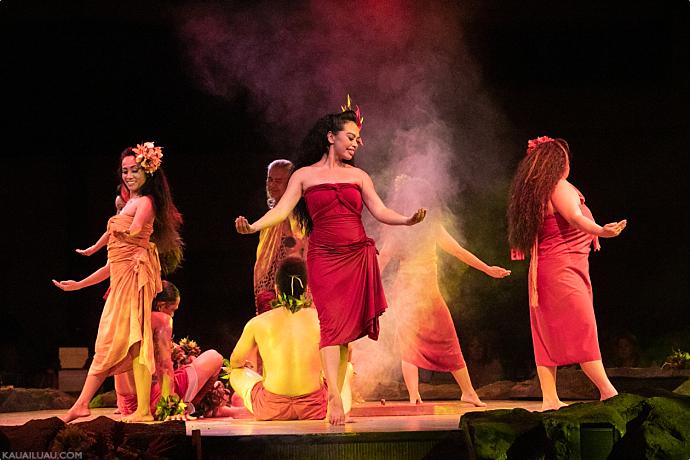
Let’s take a deep dive into all things hula— so the next time you’re at a luau or stumble upon an impromptu performance, you’ll have a deeper appreciation for the dance.
What is Hula?
Hula is the storytelling dance of the Hawaiian Islands. It can be used to depict history and genealogy and portray both factual and mythical narratives. The dance is totally unique to Hawaii, characterized by fluid steps and graceful arm movements. Every movement and gesture in hula has a specific meaning, representing anything from plants and animals to the elements and the stars.

Hula History
The origin stories of hula vary, but many reference Pele, the goddess of volcanoes. Others cite Pele’s sister, Hiʻiaka, as the first dancer of hula. Others still credit Laka, the great navigator.
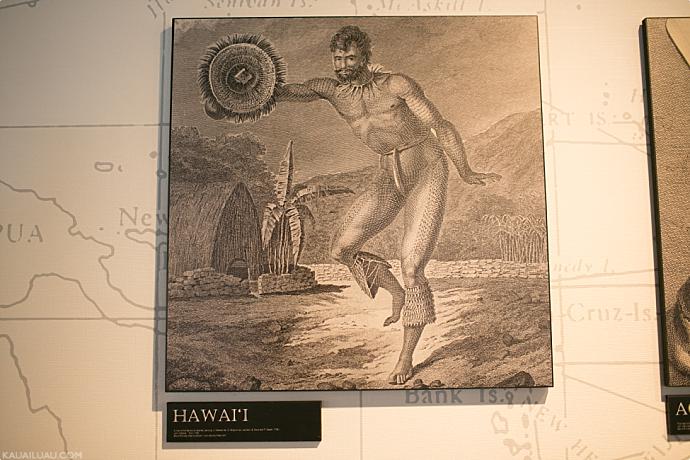
Legends about the birth of hula vary from island to island, just as movements vary by region. For instance, traditional hula styles on Kauai are more fluid and melodic. In contrast, in Puna on Hawai‘i Island— near Kilauea, one of the most active volcanoes in the world— traditional hula features chanting that sounds similar to the roaring of a volcano.
Before the 1820s, Hawaii had no written language. Instead, hula was used to perpetuate stories and knowledge from generation to generation. Hula was (and still is) also a form of worship. In ancient times, all hula was preceded and followed by prayers and chants.
As missionaries began arriving in the 19th century, hula was deemed vulgar, and public dance performances were banned. Hula schools evaporated, though some hālau (schools) continued to operate quietly in rural villages.
But things began to change in 1883 when King David Kalakaua hosted an elaborate coronation at the newly-constructed Iolani Palace in Honolulu. Dubbed the “Merrie Monarch,” Kalakaua packed the two-week celebration with once-outlawed traditions like hula and Hawaiian music.
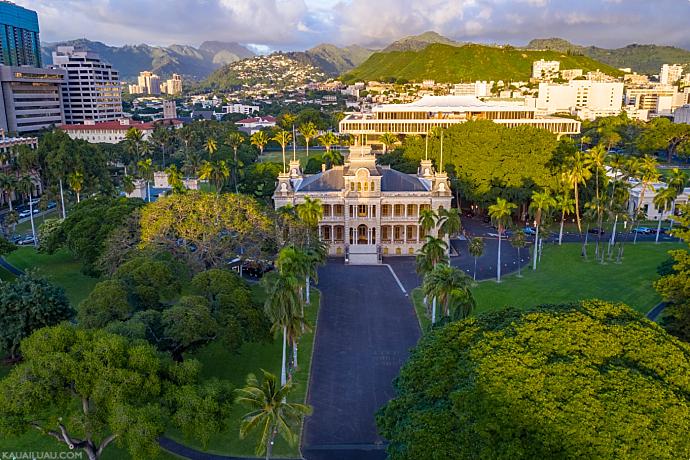
Sadly, hula’s resurrection didn’t last long. The dance— and other Hawaiian traditions— were again spurned following the 1893 overthrow of the Hawaiian Kingdom.
Hula began to take off again as tourists started arriving in the islands in the 1920s. However, this time, things were different. The missionary influence in Hawaii had changed hula. The chants became more melodic, like Christian hymns. Dances no longer commemorated old gods but things like flowers, rain, and Hawaiian monarchs.
As tourists arrived in droves in the 20th century, many stereotypes about hula were formed. Luaus featured a “whitewashed” version of the dance, with girls shaking their hips in coconut bras and cellophane skirts. Many people viewed hula solely as a form of entertainment rather than a sacred art form.
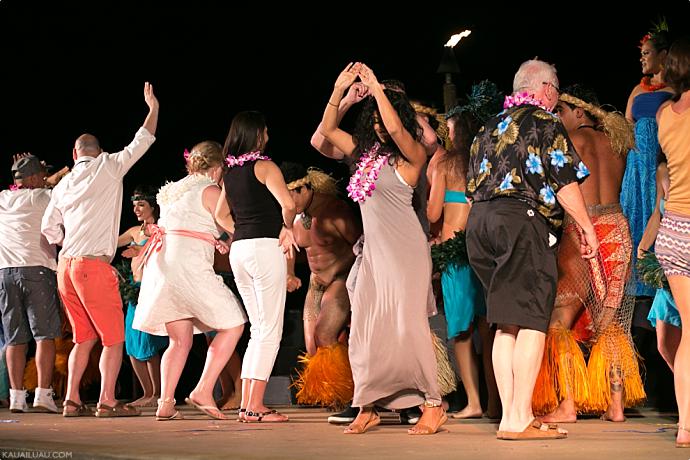
Finally, the 1970s rolled around, and Hawaiian culture was thrust into a revival. Hawaii’s state constitution was amended in 1978 to include Hawaiian as an official state language in addition to English. Schools were also mandated to teach students Hawaiian history, language, culture, and hula.
More recently, in the last few decades, many luaus across the state have shifted their previously kitsch-saturated performances to include more traditional Hawaiian dance and costumes. Some luaus, like the Old Lahaina Luau, focus solely on authentic Hawaiian hula.
Different Types of Hula
There are two types of dances in Hawaiian hula.
Hula kahiko is the most ancient, traditional form of hula. Hula kahiko is performed solely using percussion instruments like an ipu heke (double gourd drum). A chanter— usually the kumu hula, or hula teacher— accompanies the beat.

In hula kahiko, female dancers wear paʻu, a skirt traditionally made from kapa, ti leaves, or lauhala (dried pandanus leaves). Men often only wear malo, loincloth. Adornments usually include greenery like ferns.
Hula ʻauana is the modern style of hula, which deviates from traditional hula kahiko and leans more on creativity. Hula ʻauana is usually more flowy and is accompanied by melodic instruments like ukulele and guitar. Male hula ʻauana dancers typically wear pants, while females have more freedom in their choice of dress. Some hula ʻauana costumes are selected to depict an era, like the cellophane skirts of the mid-1900s.

Where To See Hula
The BEST place to watch hula is at the Merrie Monarch Festival. The festival is like the Olympics of hula. Held annually in Hilo, it is one of the most coveted events in Hawaii. The finest hālaus from around the state are invited to compete for awards in hula kahiko and ʻauana.
However, getting tickets to the week-long festival requires determination: ticket requests must be mailed in. Make sure your request is postmarked the day tickets go on sale. Otherwise, they might be sold out by day two. If you can’t get a ticket, you can keep up with the festival live on K5, Hawaii News Now.
Visitors can also catch hula performances at malls and resorts across Hawaii. And of course, you can watch both hula kahiko and hula ‘auana at most Kauai luaus, including Auliʻi Luau and Luau Kalamaku.
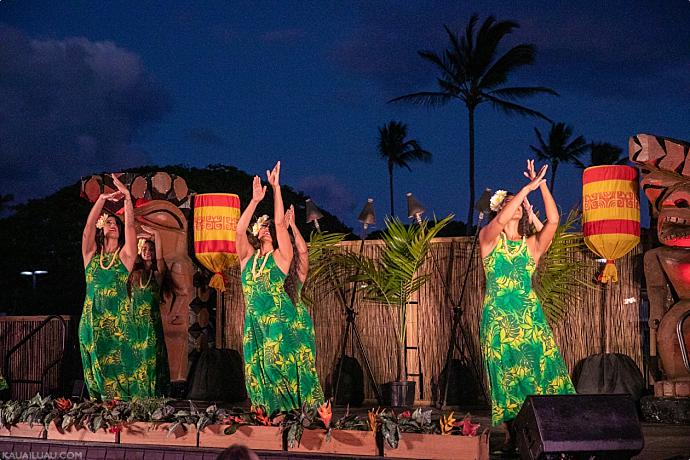
Next time you go to a luau, see if you can recognize Hawaiian dances and tell the difference between hula kahiko and hula ʻauana. Thanks for reading, a hui hou!
© Kauai Luau • 27 Halekuai St. Kihei, HI 96753 • privacy

